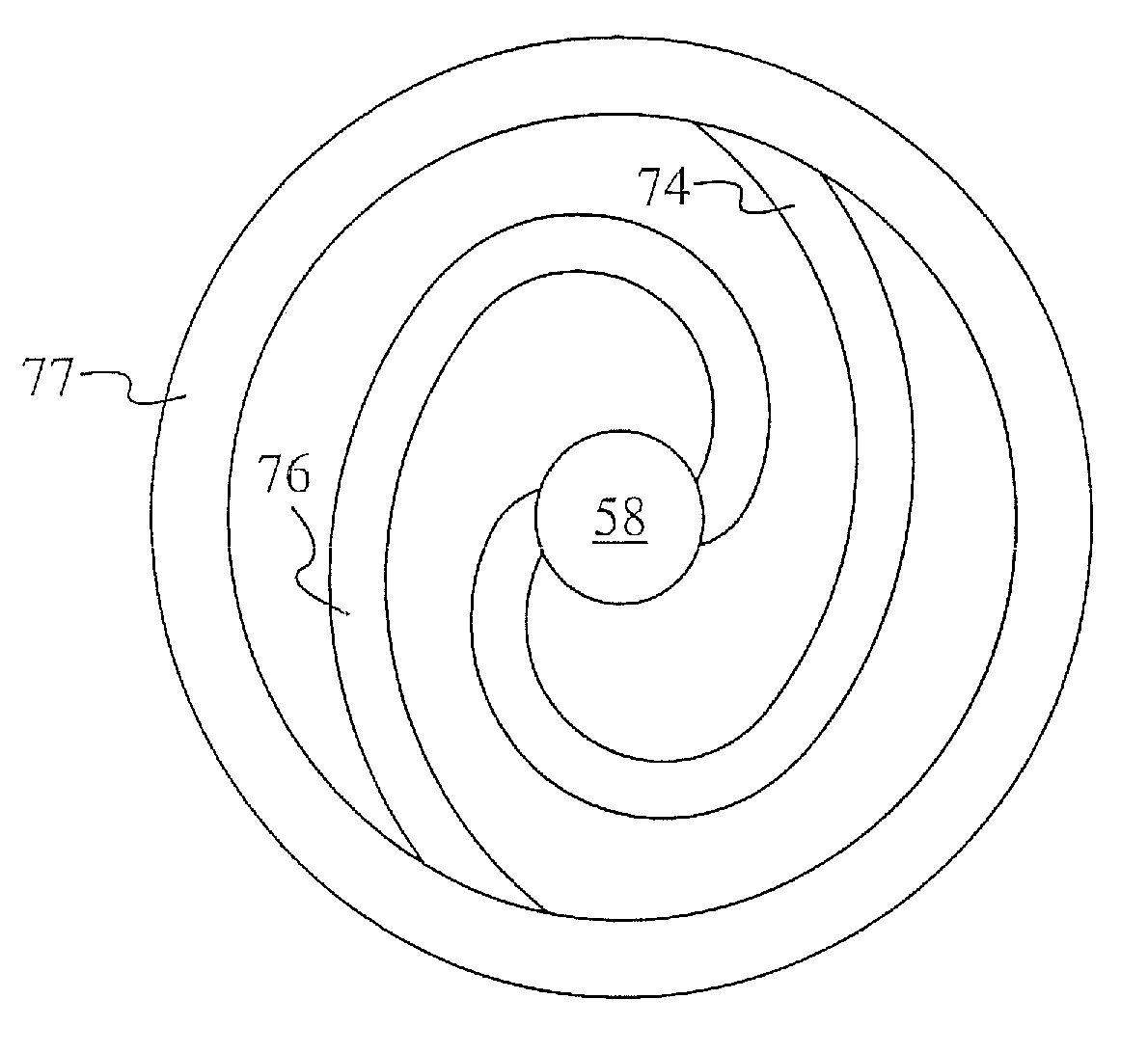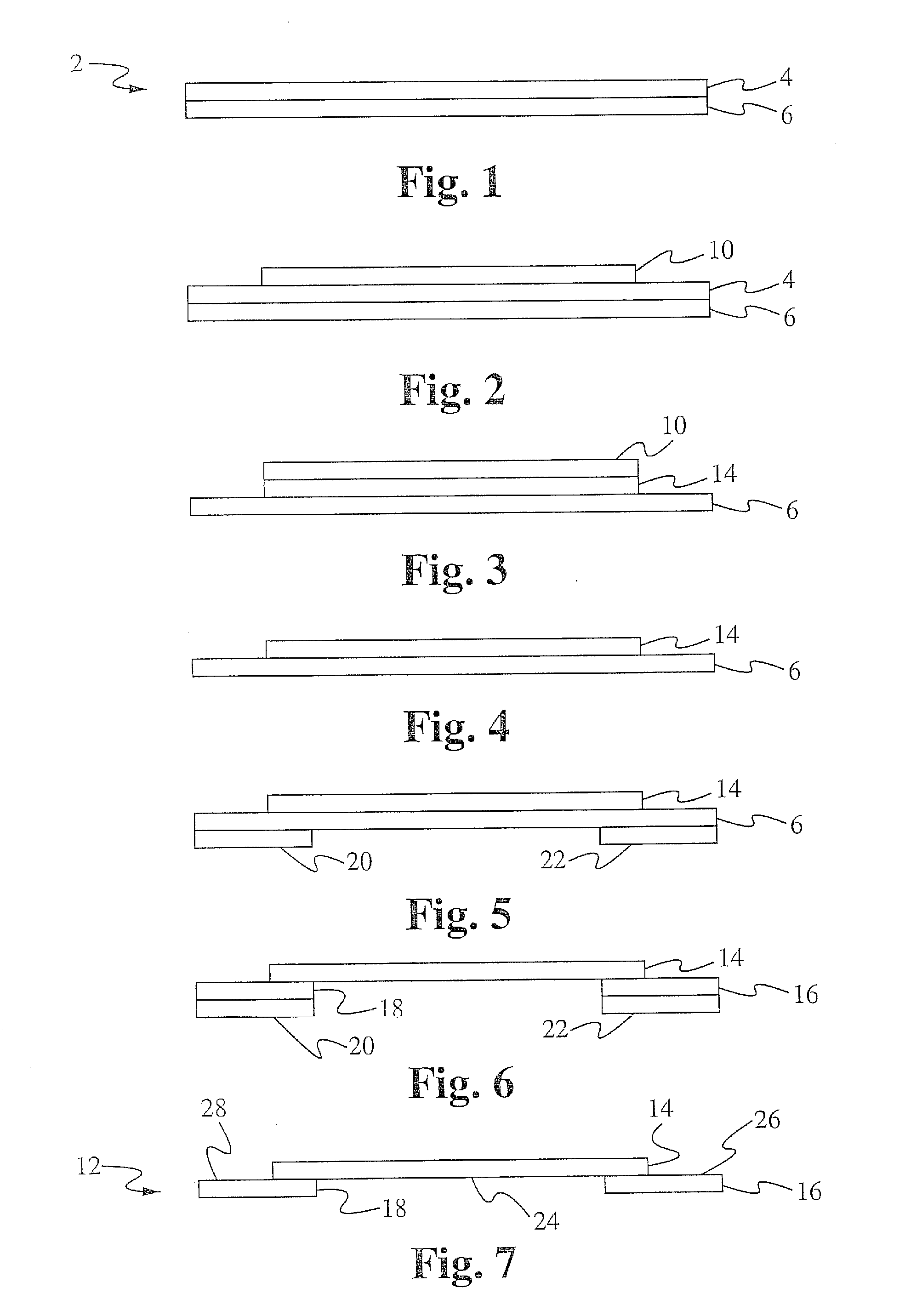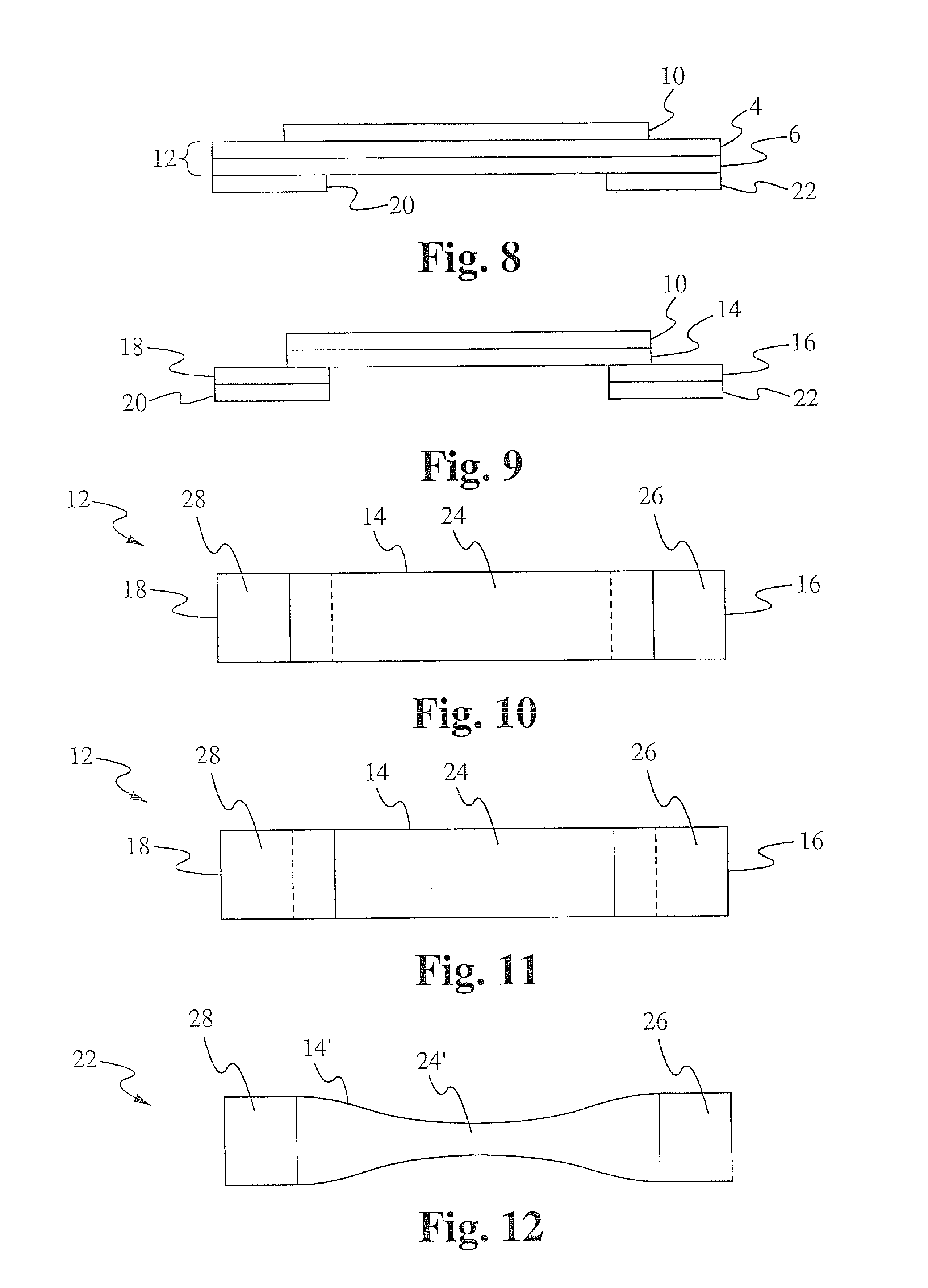[0009]In one aspect, a method of fabricating one or more fusible links includes providing a clad foil comprising a first layer and a second layer, wherein the first layer and the second layer are made of different materials; applying one or more masks to the first layer and one or more masks to the second layer; selectively etching the first layer and the second layer, thereby forming one or more first portions wherein the first layer is removed and the second layer remains, one or more second portions wherein the first layer is removed and the second layer remains, and one or more third portions wherein the second layer is removed and the first layer remains, wherein each third portion couples one of the first portions to one of the second portions, further wherein each first portion forms a first welding pad and each second portion forms a second welding pad; removing the one or more masks from the first layer; removing the one or more masks from the second layer; and forming one or more fusible conductors from each third portion.
[0010]In some embodiments, the one or more fusible conductors are formed by performing a stamping step or a cutting step on each third portion after the one or more masks are removed from the first layer. In other embodiments, the one or more fusible conductors are formed by etching during the selective etching of the first layer, further wherein the one or more masks applied to the first layer are configured to form the one or more fusible conductors. In some embodiments, the first layer and the second layer are selectively etched using a single-step etching process. In other embodiments, the first layer and the second layer are selectively etched using a two-step etching process, further wherein during a first etching step of the two-step etching process a first etchant is used that etches the first layer but not the second layer, and during a second etching step of the two-step etching process a second etchant is used that etches the second layer but not the first layer. In some embodiments, the clad foil is formed into a single fusible link comprising one first welding pad that forms a battery cell electrode pad, one second welding pad that forms a current collector conductor pad, and one or more fusible conductors coupling the one first welding pad to the one second welding pad. In other embodiments, the clad foil is formed into a fuse sheet having an array of fusible links, each fusible link for coupling to one battery cell electrode of a battery pack. In some embodiments, each third portion is coupled to one of the first welding pads via a first clad foil portion that includes both the first layer and the second layer, and each third portion is coupled to one of the second welding pads via a second clad foil portion that includes both the first layer and the second layer. The second layer has a higher melting temperature and a higher electrical resistivity than the first layer. In some embodiments, the first layer comprises aluminum and the second layer comprises nickel. In some embodiments, each first welding pad comprises a battery cell conductor pad, and each second welding pad comprises a current collector element. In some embodiments, the one or more first welding tabs are welded to battery cell electrodes and the one or more second welding tabs are welded to a current collector plate or to an electrical terminal using resistive welding or laser welding. In some embodiments, the one or more masks applied to the first layer and the one or more masks applied to the second layer are physical masks. In other embodiments, the one or more masks applied to the first layer and the one or more masks applied to the second layer are applied using photolithography. Each fusible conductor opens when a current flow through the fusible conductor reaches a threshold current.
[0011]In another aspect, a method of fabricating a fusible link assembly includes fabricating a fusible link having one or more first welding tabs and welding each of the one or more first welding tabs to a corresponding one battery cell electrode. Fabricating the fusible link includes providing a clad foil comprising a first layer and a second layer, wherein the first layer and the second layer are made of different materials; applying one or more masks to the first layer and one or more masks to the second layer; selectively etching the first layer and the second layer, thereby forming one or more first portions wherein the first layer is removed and the second layer remains, one or more second portions wherein the first layer is removed and the second layer remains, and one or more third portions wherein the second layer is removed and the first layer remains, wherein each third portion couples one of the first portions to one of the second portions, further wherein each first portion forms a first welding pad and each second portion forms a second welding pad; removing the one or more masks from the first layer; removing the one or more masks from the second layer; and forming one or more fusible conductors from each third portion.
 Login to View More
Login to View More 


